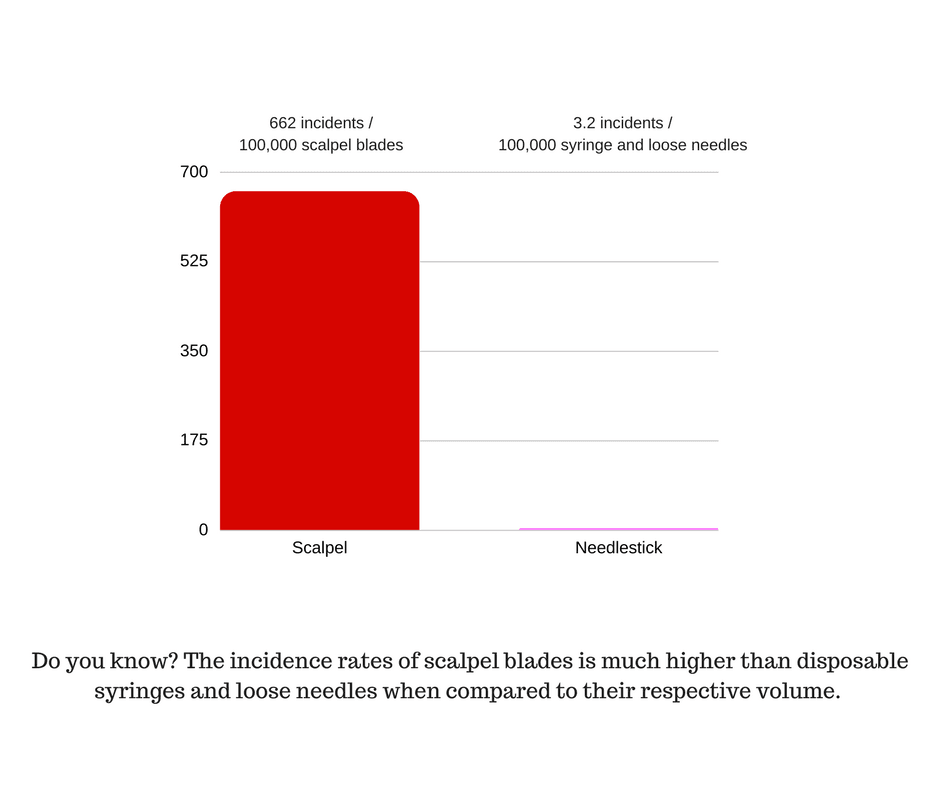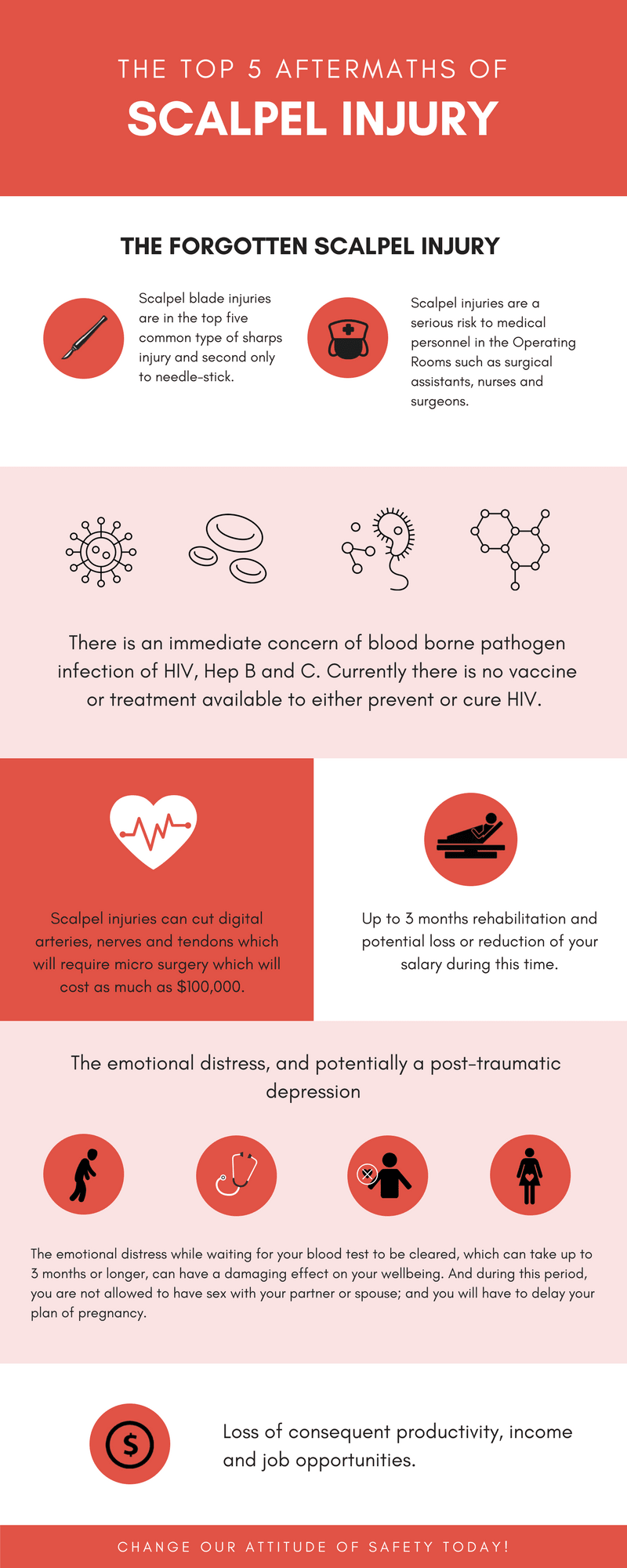5 Scalpel Injury Aftermaths That Will Make You Cringe
Assisting people’s health and well-being must be one of the most altruistic and fulfilling careers that in existence.
Yet, when it comes to our own safety we tend to let ourselves down, potentially due that altruistic inclination of worrying about others first.
In reality, healthcare professionals are at a high risk of scalpel injuries, who can suffer extreme consequences if we do not adopt correct behavior in handling scalpel blades.
The Forgotten Scalpel Injury
A scalpel injury happens due to bad practices in removing and disposing of blades and is regrettably a common story amongst health practitioners, especially those working in the operating room.
Scalpel blade injury is in the top five common types of sharps injuries, second only to needle-stick injuries.
However, if we compare the incidence rate of scalpel blade injuries, which is 662 per 100,000 scalpels removed, it is much higher than the incidence rate of needlestick injuries (3.2 per 100,000 loose needles).
Additionally, a scalpel injury is a serious risk to medical personnel in the operating rooms such as surgical assistants, nurses and surgeons, medical and nursing students as well as the downstream staff in the hospital. Downstream staff include wardsmen (or porters) and people working in the laundry.
While statistics around the world indicate a decrease in sharps injury in nonsurgical settings, unfortunately the trend within surgical settings goes in the opposite direction.
The damaging aftermaths of a scalpel injury may be permanent, and some may even become life threatening, which should be enough reasons to finally drive our attention to better practices.
The Aftermaths
Scalpel injury is usually more severe than needlestick injury. The top 5 aftermaths of a scalpel injury include:
- The risk of contracting serious diseases and inducing infections
There is an immediate concern of blood borne pathogen infections of HIV, Hep B and C. Currently there is no vaccine or treatment available to either prevent or cure HIV. Blood borne infections have caused death to numerous medical personnel, and I am sure it is not a position that you want to be in.
- Physical damage
A scalpel injury can cut digital arteries, nerves and tendons, which will require micro surgery that will cost as much as $100,000. The process will involve up to 3 months rehabilitation and potential loss or reduction of your salary during this time.
- The emotional distress, and potentially a post-traumatic depression
The emotional distress while waiting for your blood test to be cleared, which can take up to 3 months or longer, can have a damaging effect on your wellbeing. And during this period, you are not allowed to have sex with your partner or spouse; and you will have to delay any plans of pregnancy.
- The loss of consequent productivity, income and job opportunities due to the time needed to recover from a scalpel injury
You will become a burden to the team. Do you think the hospital will compensate you for the loss of productivity?
- The disruption during surgical procedures due to the need of treating a cut or removing a professional in the middle of the operation.
Imagine yourself as a surgeon attending a coronary artery bypass grafting (CABG), or commonly known as, an open-heart surgery. Suddenly, you suffer a scalpel blade cut that injures a tendon. You become another patient in the middle of a stressful surgical environment, needing medical assistance from your colleagues. The healthy artery has not yet been grafted to the blocked one, so the patient will be there “open-heartedly”, waiting for you to be fit again, if ever, in order to finish the procedure.
The aftermaths of a scalpel injury are not only a health concern but also a financial one. The hospitals must afford the productivity loss of staff and ensure their replacement while they recover. Equally, the victim of the injury loses his/her own productivity records and faces the risk of losing promotional opportunities due to their absence or the stigma of having precedent of injuries at work.
It’s Time To Change Our Safety Attitude
While the list goes on, I have the impression that this should be enough for us to understand that the possibility of contracting some life-threatening diseases like HIV, or Hepatitis B and C, is as real as the testimonies get.
We risk damage not just to our physical health, but also to our emotional integrity due to the stress that a cut and its consequent treatment might inflict on us. Believe me, these events are not taken from one of those popular TV medical dramas such as “Embarrassing Bodies”. They happen more often than not in our hospitals and clinics around the world.
But we can change this – we can prevent more than half of the scalpel blade injuries, including when surgeons are removing or disposing blades during an operation. We need to strengthen our safety attitudes, and we should not fall into the trap of self-neglect in the belief that this is what we should do for our patients.
Patients deserve the best care possible. In the same vein, healthcare professionals deserve a healthcare system, or appropriate tools so that that they do not need to worry about their own safety at work. We need to stand firm on the fact that improved staff safety will improve patient wellbeing. Otherwise, healthcare providers and consequently, their patients, will continue to suffer.



